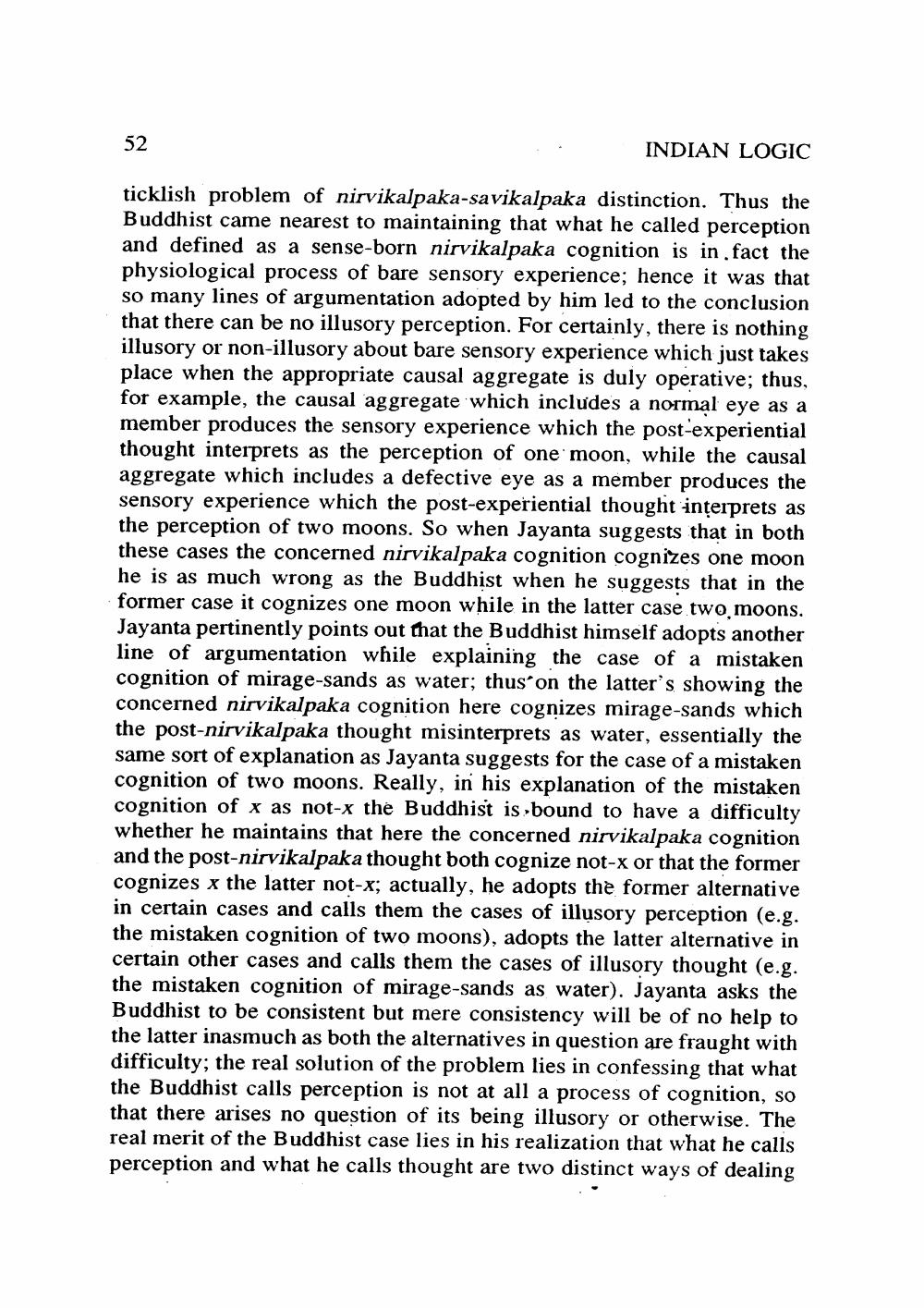________________
52
INDIAN LOGIC
ticklish problem of nirvikalpaka-savikalpaka distinction. Thus the Buddhist came nearest to maintaining that what he called perception and defined as a sense-born nirvikalpaka cognition is in fact the physiological process of bare sensory experience; hence it was that so many lines of argumentation adopted by him led to the conclusion that there can be no illusory perception. For certainly, there is nothing illusory or non-illusory about bare sensory experience which just takes place when the appropriate causal aggregate is duly operative; thus, for example, the causal aggregate which includes a normal eye as a member produces the sensory experience which the post-experiential thought interprets as the perception of one moon, while the causal aggregate which includes a defective eye as a member produces the sensory experience which the post-experiential thought interprets as the perception of two moons. So when Jayanta suggests that in both these cases the concerned nirvikalpaka cognition cognizes one moon he is as much wrong as the Buddhist when he suggests that in the former case it cognizes one moon while in the latter case two moons. Jayanta pertinently points out that the Buddhist himself adopts another line of argumentation while explaining the case of a mistaken cognition of mirage-sands as water; thus' on the latter's showing the concerned nirvikalpaka cognition here cognizes mirage-sands which the post-nirvikalpaka thought misinterprets as water, essentially the same sort of explanation as Jayanta suggests for the case of a mistaken cognition of two moons. Really, in his explanation of the mistaken cognition of x as not-x the Buddhist is bound to have a difficulty whether he maintains that here the concerned nirvikalpaka cognition and the post-nirvikalpaka thought both cognize not-x or that the former cognizes x the latter not-x; actually, he adopts the former alternative in certain cases and calls them the cases of illusory perception (e.g. the mistaken cognition of two moons), adopts the latter alternative in certain other cases and calls them the cases of illusory thought (e.g. the mistaken cognition of mirage-sands as water). Jayanta asks the Buddhist to be consistent but mere consistency will be of no help to the latter inasmuch as both the alternatives in question are fraught with difficulty; the real solution of the problem lies in confessing that what the Buddhist calls perception is not at all a process of cognition, so that there arises no question of its being illusory or otherwise. The real merit of the Buddhist case lies in his realization that what he calls perception and what he calls thought are two distinct ways of dealing




